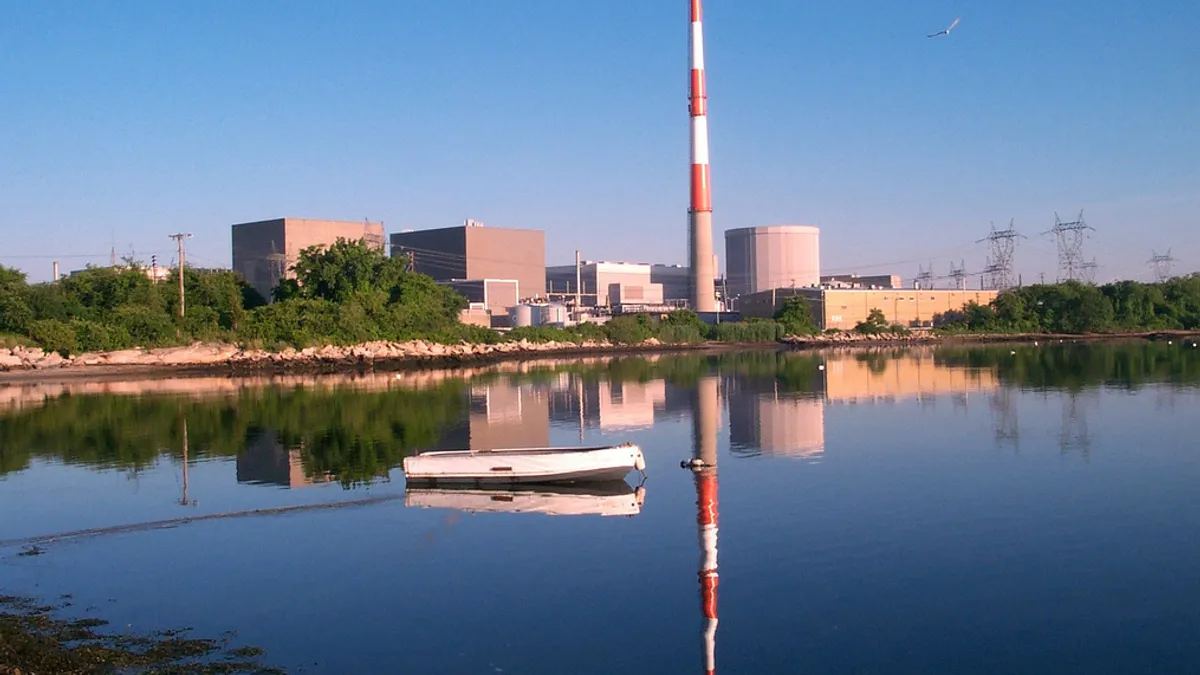Dive Brief:
- Connecticut officials on Friday moved to secure the future of Dominion Energy's Millstone nuclear plant, selecting a 10-year bid for power from the facility as part of a solicitation for carbon-free generation resources.
- Millstone was selected alongside 165 MW of solar energy, 300 MW of offshore wind and contributions from New Hampshire's Seabrook nuclear plant as part of a request for proposals (RFP) issued in May by the state Department of Energy and Environmental Protection (DEEP). All together, the accepted bids represent about 45% of Connecticut's electric load.
- State regulators determined in a November draft decision that Millstone, Connecticut's only nuclear power plant, was at risk of early retirement — a status which allowed the plant to bid into the state's carbon-free RFP. The projects must be approved by state utility regulators.
Dive Insight:
Connecticut statute Public Act 17-3, signed by Democratic Gov. Daniel Malloy in June, 2017, required state regulators to study the economic viability of the Millstone plant, which Dominion warned could close if it did not receive financial support.
State regulators ruled in November to allow Millstone to bid into the carbon-free procurement auction, after determining its "at risk" status in a draft decision. Previously, the company did not have an arrangement with the state.
The DEEP decision, announced last Friday, selected a 10-year bid for almost 50% of Millstone's output. After the first three years, Connecticut's utilities are directed to negotiate for a price that reflects Dominion's costs and risks to keep the plant during the at-risk period of the bid, from 2022 to 2029.
DEEP requested negotiations to conclude on March 31.
The state also selected a bid from the New Hampshire-based Seabrook nuclear station, owned by NextEra Energy Resources, which had a levelized cost of $0.03/kWh. That deal begins in 2022 and is for 1900 GWh of energy.
"Connecticut sees the value that nuclear provides as carbon-free, baseload power and as such, have included it in their long-term plans for achieving their carbon goals," Ken Holt, Millstone's communications manager, told Utility Dive via e-mail.
The 10-year deal for Millstone's output represents about 75% of the amount of energy allowed from any source under the Connecticut law that governs its zero-carbon RFP, Holt said.
Some green groups say that's too much. The Connecticut Fund for the Environment told the Hartford Courant the Malloy administration "doubled down on the energy sources of the past" in selecting the nuclear facilities instead of more renewable energy.
DEEP in June the state's first acquisition of offshore wind energy, tapping Deepwater Wind to provide 200 MW to the state as part of a larger project, Revolution Wind, which will also provide 400 MW to Rhode Island. The project, which is now owned by Danish developer Ørsted, secured an additional 100 MW of offshore wind capacity through the carbon-free auction.
The state also selected nine solar projects that have an average levelized cost of about $0.049/kWh. Three of those projects are in Connecticut, and the rest are in Maine and New Hampshire. Two of the projects, including the Black Hill Point Energy Center in Connecticut, will pair solar with energy storage.
Other renewable energy projects, including hydropower and land-based wind participated in the RFP. The projects are subject to Public Utilities Regulatory Authority approval.














